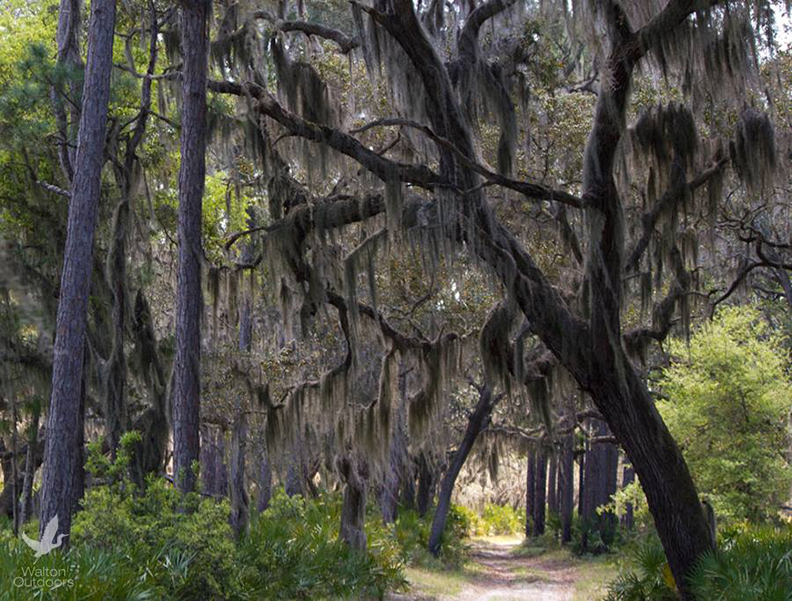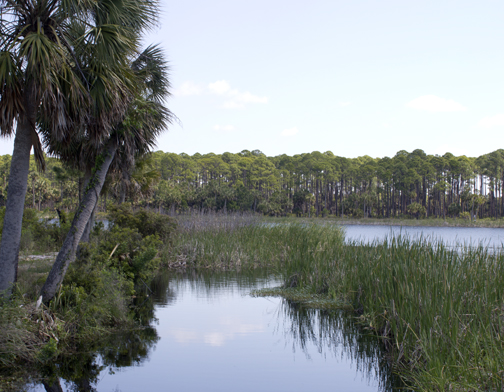
Have you ever wanted to step back in time and explore the natural beauty of Florida? Pack yourself a lunch and head over to the undeveloped treasure chest that awaits you at the St. Vincent Island National Wildlife Refuge (NWR).
Located at the mouth of the Apalachicola River, in the Gulf of Mexico, St. Vincent Island NWR is a 12,300-acre barrier island. The island is 9 miles long and 4 miles wide. The triangular island is larger than most of the northern Gulf coast barrier islands and dissected by dune ridges, freshwater lakes and sloughs on the east end. The west ends supports dry upland pine forests.
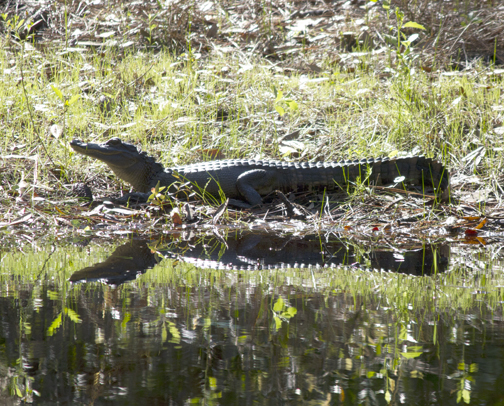
The island is a haven for an abundance of wildlife including migratory birds, raptors, alligators, deer, and red wolves. It is rich with plant life that includes pines, hardwoods such as scrub and live oak, spiderwort, St. John’s wort, and gallberry, saw palmetto to name a few. The beach is a delight for shell seekers, as the tiny gems scattered along the south side of the island are a pocketful of keepers.
Accessed only by water, options to get there are paddling, boating or by shuttle boat located at the Indian Pass boat ramp. Call (850) 229-1065 for shuttle information/reservation. ::MAP::
Things to know:
• Motorized vehicles and equipment are prohibited – bicycles are permitted.
• Refuge is closed during permitted hunts and storm events.
• No potable water or telephones are on the island.
• The 2 restrooms are located near the boathouse and by the cabin in the interior.
• Bring water and insect repellent.
• The refuge is open daylight hours only. No overnight camping is permitted except during special hunt season.
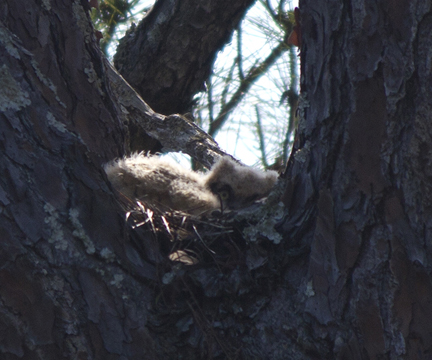
Kayak/canoe/stand up paddle board:
It is a short paddle from Indian Pass to the western shoreline. Be observant of the tidal flow. At certain times, it can be quite strong making a short paddle very challenging. Once you reach the shoreline, you can paddle along the Gulf of Mexico or paddle the bay side and experience the many creeks and coves.
Biking:
There are roads and trails throughout the island. Trail maps are available at the Wildlife Refuge office in Apalachicola and in kiosk near the boat dock on the western end of the island. Most of the biking roads and hiking trails are inland, so bikers and hikers should be prepared for biting insects in dense but beautiful forests.
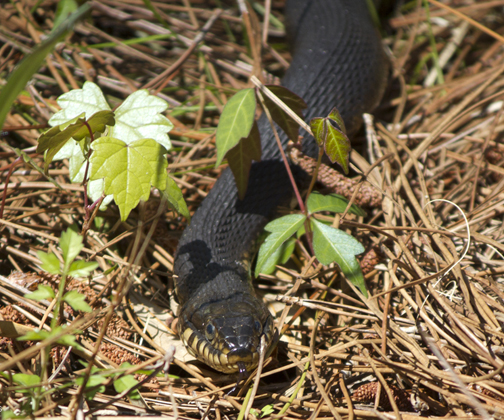
Hiking options:
Easy:
• From Indian Pass boat dock head down the road toward the Gulfside point. Note restrictions due to nesting shorebirds.
• Take the beach trail over to the Gulf side of the island. Have a pleasant walk on the beach.
• Cut back over to Indian Pass via “O” road (sign sitting up on dune). Follow to the end of “O” road and take a left on “B” road which will bring you back to Indian Pass. Young children can do this hike if they are used to walking.
Moderate:
• Start same route as Easy hike.
• Keep going past “O” road for as long as you wish. Cut back over any of the roads and take a left on “B” and head back to Indian Pass.
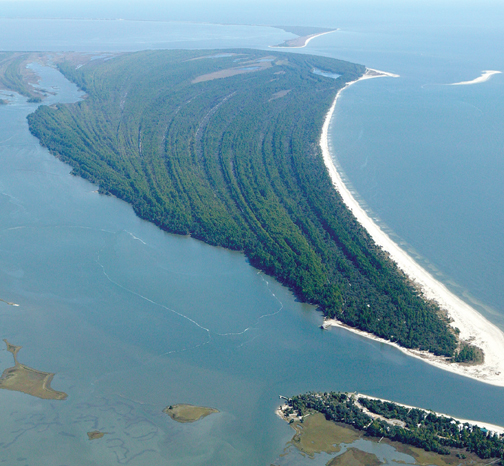
Guided tours:
Guided tours temporarily closed
The Supporters Group of St. Vincent Island offers a guided tour of the island once a month. The tour is free, but participants must make a reservation and there is a nominal charge for a local boat captain to take you from Indian Pass to the island. Contact the St. Vincent Wildlife Refuge Office for reservations and the name and phone number of the local captain providing transportation to the island. Learn more here.
You can also schedule transportation to and from the island for yourself and your bike whenever you would like to visit the island. Click here for reservation information.
History:
Pottery shards that have been found on the island indicate that Native Americans inhabited the island as early as the year 240. Franciscan friars doing missionary work with the Apalachee Indians named the island St. Vincentin 1633. Creeks and Seminole Indians inhabited of the island in the 1750s.
During the Civil War, a small fort called Fort Mallory was built off of Dune Road. In 1868 George Hatch purchased St. Vincent Island at an auction for $3,000. His grave is the only marked grave on the island and can be found west of the cabin.
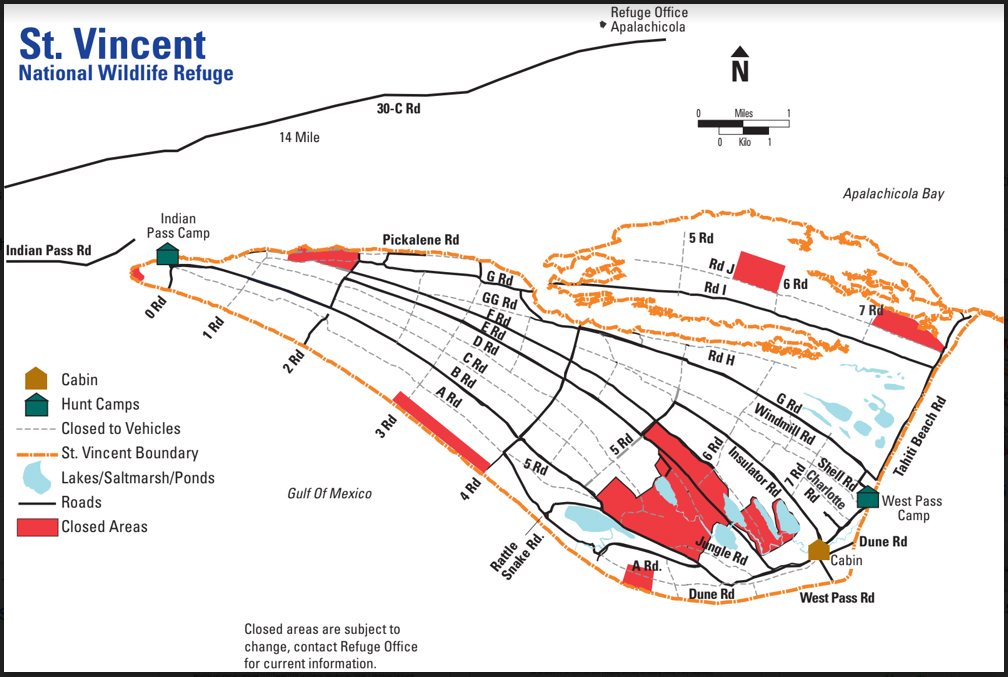 In 1908 Dr. Pierce purchased the island for $60,000 and during his ownership the island had several uses. He imported old world game and used the island as a private hunting preserve. The Sambar deer, an elk from India, acclimated to the island terrain and remains on the island today. He also raised beef cattle which were sold to the Apalachicola market. In 1940 the first oyster leases were granted for the bay waters by the island. The Pierce estate also sold pine timber to the St. Joe Company who built a bridge to the island for timber removal. The cabin was also built during this period.
In 1908 Dr. Pierce purchased the island for $60,000 and during his ownership the island had several uses. He imported old world game and used the island as a private hunting preserve. The Sambar deer, an elk from India, acclimated to the island terrain and remains on the island today. He also raised beef cattle which were sold to the Apalachicola market. In 1940 the first oyster leases were granted for the bay waters by the island. The Pierce estate also sold pine timber to the St. Joe Company who built a bridge to the island for timber removal. The cabin was also built during this period.
The Loomis brothers bought the island in 1948 for $140,000 and turned the island into a private hunting preserve. Many exotic animals such as zebra, eland, black buck, ring necked pheasants, Asian jungle fowl, bob white quail, and semi-wild turkeys were brought to the island.
In 1968 The Nature Conservancy purchased the island for $2.2 million. U. S. Fish and Wildlife Service then purchased St. Vincent with Duck Stamp funds. All exotic animals, except the Sambar deer and feral hogs were removed.
Hunting:
St. Vincent Island offers some of the most unique hunting opportunities found on any wildlife refuge. For hunters wanting to rough it and go after “big game” there is the primitive weapon (muzzle and bow) Sambar deer hunt. This elusive deer which is native to Southeast Asia can measure up to 6 ft. tall and can weigh up to 700 lbs. The 150 permits for this hunt are issued through a lottery that attracts between1200 and 1400 applicants.
Permits for the two other hunts, white tailed deer archery hunt and white tailed deer primitive weapon hunt, are issued to the first 250 applicants. ($25 fee). The application process is done through the Florida Fish and Wildlife Conservation Commission’s Total Licensing System. Click here for info.
Camping is primitive and all supplies must be carried to the island and transported on foot to designated camping areas.
Visitor’s center:
The Refuge Office/Visitor Center is in the Harbor Master Building at 479 Market Street, Apalachicola, Florida. Refuge signs on Highway 98 will direct you to the Center. The Center is open Monday – Thursday 10 am – 3:30 pm E.S.T.
Become a friend of the island and learn more at: www.stvincentfriends.com

